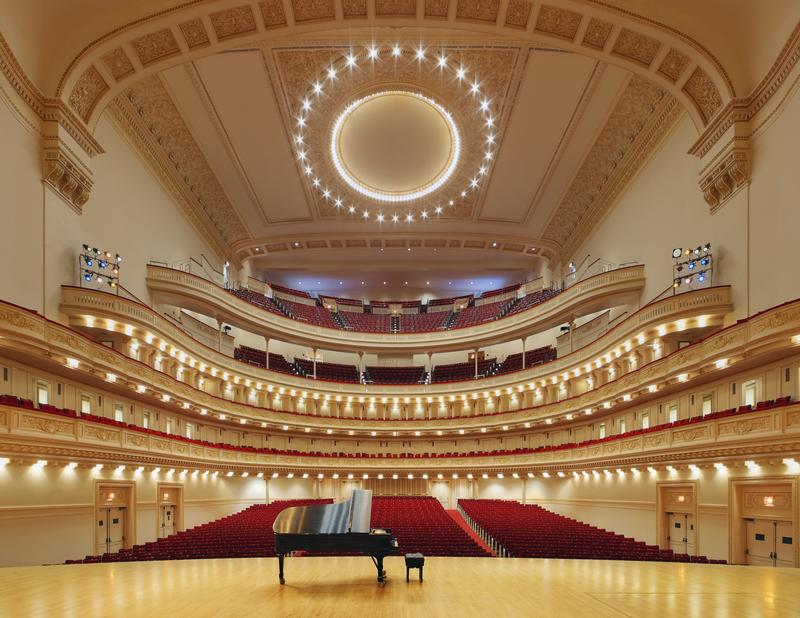Isaac Stern Auditorium Information
Independent New York concert guide not affiliated with Carnegie Hall.
With a reputation for excellence in both classical and contemporary concerts, the Carnegie Hall was designed by architect William Burnet Tuthill and built by philanthropist Andrew Carnegie in 1891. The venue proudly hosts its own departments for artistic programming, development, and marketing, with about 250 performances every concert season, in addition to being available for rent to performing groups. Among its 3 auditoriums, the Carnegie Hall has 3,671 seats.
The Isaac Stern auditorium got its name in 1997, after violinist Isaac Stern, who tried to prevent the hall being destroyed in the 60s. From 1892 to 1962, the hall primarily housed classical music, with a shift to include contemporary music from the 90s onwards. In 1986, the hall was extensively renovated.
About Isaac Stern Auditorium
The Isaac Stern Auditorium is located in Carnegie Hall. Its street address is 881 7th Ave, New York, NY 10019, in midtown Manhattan. If you’re visiting on foot, you can find the theater on the east side of Seventh Avenue, situated on the block between 56th and 57th Street.
As you might guess from its name, the auditorium was built by US business titan Andrew Carnegie. Its story began in 1891, when it opened as the home of the New York Symphony Society.
Since then, it has hosted many of the world’s great musical acts. Carnegie Hall’s name guarantees a top-quality performance, with around 250 events occurring at the venue each year.
The Isaac Stern Auditorium hosts several of Carnegie Hall’s most prominent performances. It has been the home of such iconic acts as the New York Philharmonic, with its outstanding acoustics attracting the world’s greatest classical music performers. You may also find comedy, orchestras, and jazz concerts on its list of upcoming events.

Isaac Stern Auditorium history
Carnegie Hall opened in 1891. It was funded by business tycoon Andrew Carnegie and designed by William Tuthill, creating an Italian Renaissance-style music venue in the heart of a booming New York City.
In its first year, the venue hosted some of the world’s leading performers. Tchaikovsky graced its stage in May 1891, with several other prominent performers following him in the following decades. It was also the home of the New York Philharmonic.
The Carnegie family sold the venue in 1925, with new owner Robert Simon funding several renovations and a new organ. It continued to host quality musical acts until the 1950s, when it faced the threat of closure and demolition. Only the efforts of violinist Isaac Stern saved the property.
The music hall was purchased by New York City in the 1960s. It was also designated as a National Historic Landmark in 1962. These moves cemented its place as a venue of the utmost importance, as it continued to host legendary classical acts.
In the 1980s, significant renovations upgraded the arena’s technology, lobby, and seating areas. These contributed further to the Isaac Stern Auditorium’s excellent acoustics.
The beginning of the 21st century saw more changes, with additional upgrades and the official naming of the Stern Auditorium / Perelman Stage (full name Ronald O. Perelman Stage.) The venue closed temporarily during the Covid-19 pandemic, before reopening in 2021, continuing to host world-class performances to this day.
For parking information please see the Isaac Stern Auditorium parking page.
For ticket information and information on our recommended ticket provider please see the Isaac Stern Auditorium tickets page.
To view the seating configuration and find out about accessible seating, please see the Isaac Stern Auditorium seating chart.
